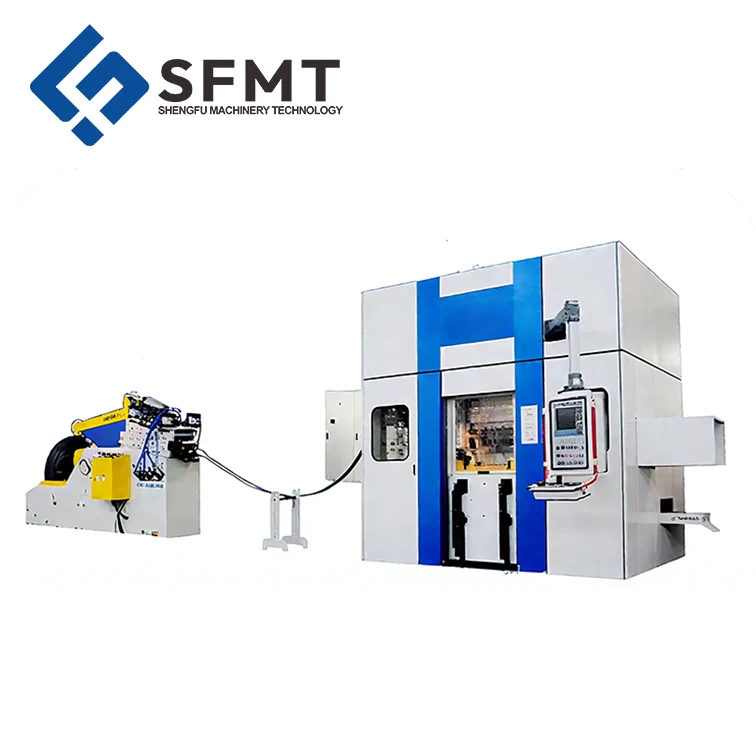Can a Precision Fine Blanking Machine For Complex Parts Pay Off Faster Than You Think?
2025-11-13
I run production where tolerances are non-negotiable, so the first question I ask is always about edge quality and repeatability. Over the years I’ve leaned on solutions from Shengfu Machinery, because their approach lines up with how I plan a cell: start with fundamentals, then scale. When you look past the buzzwords, a capable Fine Blanking Machine lets me combine shearing, coining, and straightening in a single stroke—exactly what complex profiles need—while choosing the frame style and controls that match my mix, not the other way around.
Why do complex parts demand a different approach?
Intricate geometries, tight flatness, and cosmetic edges expose the limits of conventional punching. A precision fine blanking machine uses triple-action force and controlled die clearance to deliver near-net surfaces. For parts with thin webs, asymmetric load paths, or delicate features, the process stability translates directly to fewer secondary ops and fewer surprises.
- Clean sheared zone approaches full thickness for burr-free edges
- Counterpressure suppresses rollover and maintains flatness tolerance
- Coining at bottom dead center sharpens radii on complex parts
- Low variance enables in-line gauging and closed-loop control
What problems does fine blanking solve that conventional stamping struggles with?
- Edge condition consistency for sealing, NVH, or wear interfaces
- Tight ID/OD concentricity without secondary machining
- Reduced micro-cracks on hardened materials used in driveline and safety components
- Lower scrap rate when part geometry forces long cut lengths
In practice, these wins show up as stable Cp/Cpk and a calmer shop floor—no firefighting around tool touch-ups every few thousand hits.
How do open-frame and closed-frame choices change my day-to-day?
Frame choice is about the real parts you run, not a spec sheet trophy. I pair an open-frame press with flexible cells and frequent changeovers; I lock in a closed-frame press when rigidity and parallelism under peak load dominate.
- Open-frame press helps with accessibility, quicker die swaps, and shorter re-setup time.
- Closed-frame press maximizes stiffness, keeps plate deflection minimal, and protects edge quality on thick or high-strength stock.
Which specifications actually move my cost per part?
| Spec I Prioritize | What It Really Means | Why It Matters For Complex Parts | Typical Target Range |
|---|---|---|---|
| Main Tonnage and Counterpressure | Available cutting force and reverse force at BDC | Prevents rollover, keeps edges square on thick sections | Dependent on perimeter × thickness × shear strength, plus 20–40% for coining |
| Stroke Repeatability | BDC position scatter across cycles | Direct impact on coining depth and edge polish | ±0.01–0.02 mm at the ram |
| Table/Ram Parallelism Under Load | Deflection measured hot and under peak tonnage | Protects die life and uniform wear on punches | < 0.02–0.05 mm/m under rated load |
| servo-hydraulic system Control | Programmable pressure/velocity profiles | Lets me tune pierce, shear, and coin phases independently | Multi-segment profiles with data logging |
| Die Clamping and Changeover | Quick-change rails, zero-point, auto die height | Reduces downtime on high-mix schedules | Single-minute exchange where practical |
Where do tooling and process control create the biggest gains?
- Optimize die clearance for material and thickness; too tight elevates heat and galling, too loose raises burr.
- Use a V-ring holder to uniformly clamp the blank before cutting.
- Balance punch overlap and coining load to achieve mirror-like faces without crushing grain.
- Instrument the die for tonnage, temperature, and strip travel to catch drift early.
How do I size the press without overbuying?
My quick check starts with cut perimeter × thickness × material shear strength to estimate base force, then I add margin for coining and part support. For thin stainless with long perimeters, counterpressure becomes the limiter; for thick mild steel, main ram tonnage dominates. When in doubt, I simulate the worst-case station and verify with a short trial—cheap insurance for tool life and uptime.
What does a steady production cycle look like?
- Feed stock with constant back tension and leveled flatness for metal forming stability
- Clamp with the ring holder and apply counterpressure
- Shear with high rake control on the fineblanking press
- Coin at BDC to finalize edge and thickness transition
- Release, eject, and gauge critical dimensions in-line
With consistent lubrication and heat management, that cycle keeps high-precision stamping repeatable across long runs.
How do I keep quality predictable from day one?
- Start with a PPAP mindset: capability studies, MSA on key gauges, and reference parts.
- Use closed-loop adjustments from sensors rather than operator feel.
- Track punch wear and strip surface in hours, not guesses—tie it to SPC alarms.
What should my RFQ include if I want a useful quotation?
- Annual volume, shift model, and realistic OEE
- Material spec, thickness range, coil width, and max perimeter
- Edge finish requirement, allowable burr height, and flatness targets
- Tooling approach, changeover expectations, and automation level
- Facility constraints for power, footprint, and crane access
Who am I trusting when I ramp a new part family?
I value teams that stay through first-article and the first sticky week of production. That’s where I’ve found Shengfu Machinery helpful—matching frame style to the part mix, tuning the servo-hydraulic system, and making sure my operators can run, not just watch.
What is the next step if I need samples and pricing?
If you’re weighing an upgrade to a precision fine blanking machine for complex parts, let’s make it practical. Share a print, a ballpark volume, and the edge specs you truly need. I can walk you through frame selection—open-frame press for agility or closed-frame press for maximum stiffness—and propose a cell layout that cuts changeover while protecting tool life. Ready to move forward? Contact us to request sample runs, a budgetary quote, or a line-side audit—send your inquiry now and we’ll respond with a concrete plan that fits your parts and timeline.
